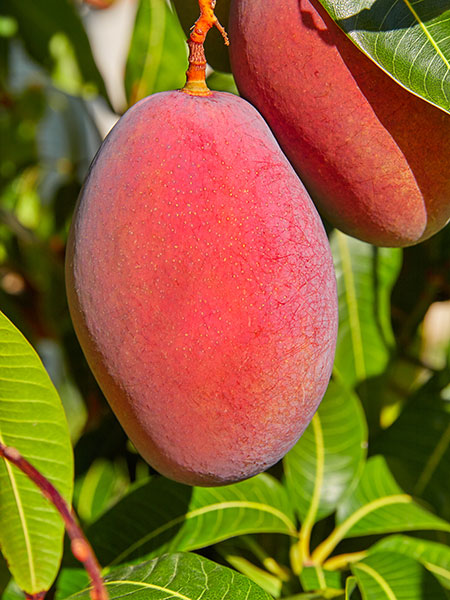 Botanical name: Mangifera indica
Botanical name: Mangifera indica
Crown and root system: This is an evergreen tree. The shape of the crown depends on the variety, from shade trees with impressive leaves, to trees with small crowns that are also suited for growing in small gardens or in a container.
Growing regions: Areas that are free of frost.
Ripening date: Summer months; the exact time depends on the variety.
Planting in a container: Only the smaller varieties should be planted in a container. Other varieties have long skewer-like roots that should not be placed in a container.
Recommended planting season: All year round except for cold months.
Special care: Confidor in early spring to prevent sooty mold, and pruning after fruit has ripened.
Varieties sold at the nursery:
Maya: This is a large tree that yields orange-yellow fruit with red cheeks. It is relatively small, ripens in early summer, is sweet and not fibrous.
Omer: This is a medium-sized tree, the fruit is similar to the Maya variety and not fibrous; ripening date is similar to the Maya.
Shelly: This tree has a narrow crown relative to the Maya variety, yields fruit in August. It is a small, round fruit that is not fibrous, orange-yellow in color with a slight blush, and a delicate sweetness.
Tali: This is a relatively large fruit, the skin is a shade of purple and it ripens before the Maya variety.
Keitt: This variety ripens toward the end of the season. It yields fruit with a greenish skin and has a delicate sweetness.
Good to know:
Mangoes originate from India and there is evidence that it existed as early as 4,000 years ago. The mango has a special status among Buddhists, because according to their belief Buddha tended to rest underneath mango trees. They took the fruit on their journeys as a special token of good luck and gave it to each other as gifts.

